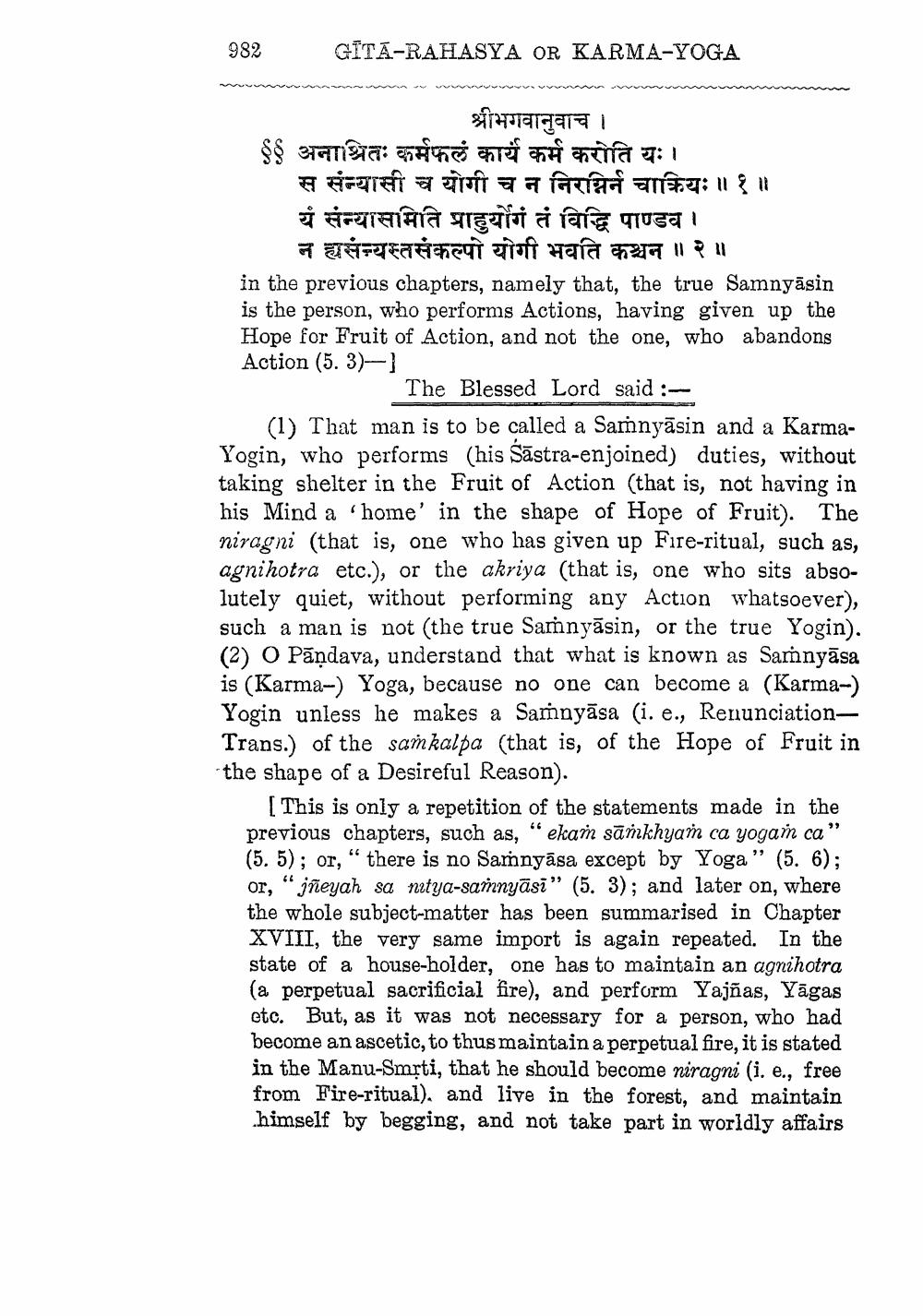________________
982
GITA-RAHASYA OR KARMA-YOGA
श्रीभगवानुवाच ।
$$ अनाश्रितः कर्मफलं कार्य कर्म करोति यः । स संन्यासी च योगी च न निरग्निर्न चाक्रियः ॥ १ ॥
यं संन्यासमिति प्राहुर्योगं तं विद्धि पाण्डव ।
न ह्यसंन्यस्तसंकल्पो योगी भवति कञ्चन ॥ २ ॥
in the previous chapters, namely that, the true Samnyasin is the person, who performs Actions, having given up the Hope for Fruit of Action, and not the one, who abandons Action (5.3)-]
The Blessed Lord said :
(1) That man is to be called a Samnyasin and a KarmaYogin, who performs (his Sastra-enjoined) duties, without taking shelter in the Fruit of Action (that is, not having in his Mind a 'home' in the shape of Hope of Fruit). The niragni (that is, one who has given up Fire-ritual, such as, agnihotra etc.), or the akriya (that is, one who sits absolutely quiet, without performing any Action whatsoever), such a man is not (the true Samnyasin, or the true Yogin). (2) O Pandava, understand that what is known as Samnyāsa is (Karma-) Yoga, because no one can become a (Karma-) Yogin unless he makes a Samnyāsa (i. e., RenunciationTrans.) of the samkalpa (that is, of the Hope of Fruit in the shape of a Desireful Reason).
99
[This is only a repetition of the statements made in the previous chapters, such as, ekam samkhyam ca yogam ca (5.5); or, there is no Samnyasa except by Yoga" (5. 6); or, "jñeyah sa nitya-samnyasi" (5. 3); and later on, where the whole subject-matter has been summarised in Chapter XVIII, the very same import is again repeated. In the state of a house-holder, one has to maintain an agnihotra (a perpetual sacrificial fire), and perform Yajñas, Yāgas etc. But, as it was not necessary for a person, who had become an ascetic, to thus maintain a perpetual fire, it is stated in the Manu-Smrti, that he should become niragni (i. e., free from Fire-ritual). and live in the forest, and maintain himself by begging, and not take part in worldly affairs




